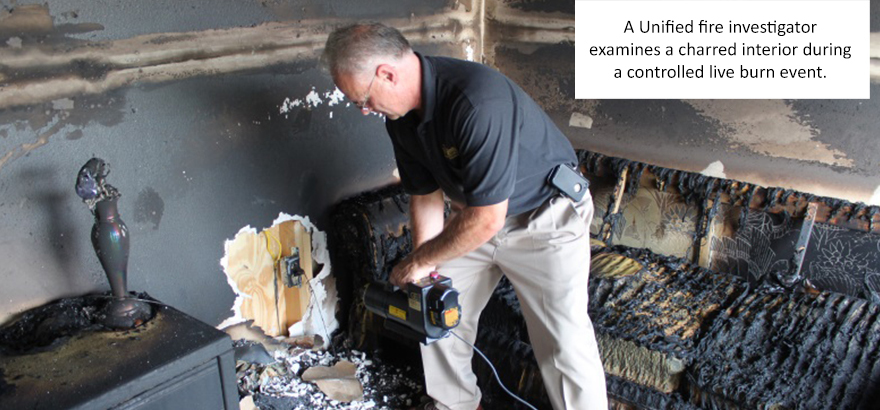In an episode that aired immediately following the Super Bowl, millions of fans of the hit NBC drama “This is Us” finally got an answer to the question that has loomed over the past two seasons: how Pearson family patriarch Jack (played by Milo Ventimiglia) died. We won’t spoil it completely, but previous episodes showed a house fire that started with a spark from a slow cooker in the kitchen and spread with terrifying speed up the curtains, then flashed across the celling. It was an emotional reminder of how life can change in an instant.
Let’s forget the slow cooker and focus on safety and prevention! What can we learn from the Pearson family’s tragedy to prevent, prepare for, and pick up the pieces in the event of a real house fire?
1) Prevent
Jack and Rebecca (portrayed by Mandy Moore) forgot to purchase batteries to replace the ones in their home’s smoke detector. A functioning smoke detector could have alerted them much sooner about the fire spreading through their home. According to the Consumer Product Safety Commission, “about two-thirds of home fire deaths occur in homes with no smoke alarms or no working smoke alarms.” We recommend these steps for avoiding fire hazards and equipping your home so that if you do experience a fire in your home, you can prevent its spread and/or prevent your family from being caught off guard, saving extra seconds that can make all the difference:
- Smoke detectors are typically not located in kitchens. However, current building/life safety codes specify smoke detectors on every floor and every sleeping area. A smoke detector on the same floor of the house would most likely detect a fire in a relatively short period of time. The U.S. Fire Administration recommends testing smoke alarms every month and replacing batteries at least once a year if using a typical nine volt battery. An even better rule of thumb is to replace batteries twice a year when changing clocks for Daylight Savings Time.
- And about that slow cooker…appliance safety is critical in fire prevention. Plug both major and small appliances directly into a wall outlet, and always unplug small appliances after use. If an appliance has faulty or broken wiring or electrical components, do not use it (and don’t give it to a neighbor!); have it repaired by a licensed electrician or throw it out and replace. Any electrical repairs in your home should be done by a qualified electrician.
- A residential sprinkler in the kitchen would likely have controlled the Pearsons’ home fire and limited damage to the cabinets near the slow cooker. A sprinkler would also be effective in preventing flashover (the moment where everything that can burn does burn). In addition, many sprinkler systems are connected to alarm systems via water flow switches in the sprinkler piping. When a sprinkler activates, the water flow switch will activate the alarm system. If your home does not have a sprinkler system, it may be worth considering. The National Fire Protection Association calculated that the risk of dying in a residential fire decreases by about 80% when sprinklers are present, and sprinklers reduce direct property damage by about 70%.
- While typically not required, a monitored alarm system can alert authorities to provide an emergency response in a timely manner. Even motion detectors connected to a burglar alarm have been known to notify people of a fire in progress.
2) Prepare
For the Pearsons, it’s possible that not knowing exactly what to do in a home fire situation caused them to stay in the house longer than if they’d had a well-prepared plan. For your family, think “two and two” – discuss two possible escape routes from all rooms and practice them twice a year. Smoke may be your biggest threat; think about how to avoid smoke inhalation when escaping, and practice getting out of the house, even if dark smoke obscures your path. Once you are out of a burning home, you should not go back into the building, even to retrieve personal belongings or family pets. Alert firefighters right away, and rely on them for rescue.
3) Pick up the pieces
Clearly, protecting your life is most important, but protecting your property and considering how to rebuild or repair in the tragic event of a fire is another stressful thing families must face. Work closely with your insurance company, and secure a trusted repair contractor to guide you through the process with care and ensure things are restored and made right.
Our experts at Unified Investigations & Sciences specialize in investigating and recreating fires after they happen to determine the origin and cause of fire losses (as pictured below). They work hand-in-hand with our Vericlaim Repair Solutions team, which supports people after they have been impacted by property damage. We much prefer to help you prevent a tragic fire—like the one featured on “This Is Us”— than recover from one.

So if you do just one thing today, test the smoke alarms in your home. Unlike a television show, there are no retakes when it comes to a house fire.
Fire Protection Engineering Team, Unified Investigations & Sciences, a Sedgwick company
- Andy Caldwell, MS, PE, Fire Protection Engineer
- Andrew Ellison, MS, PE, Senior Fire Protection Engineer
- Adam Farnham, MS, PE, Senior Fire Protection Engineer
- Jay Kramarczyk, MS, PE, Principal Fire Protection Engineer
- Ron Langstaff, MS, PE, Fire Protection Engineer